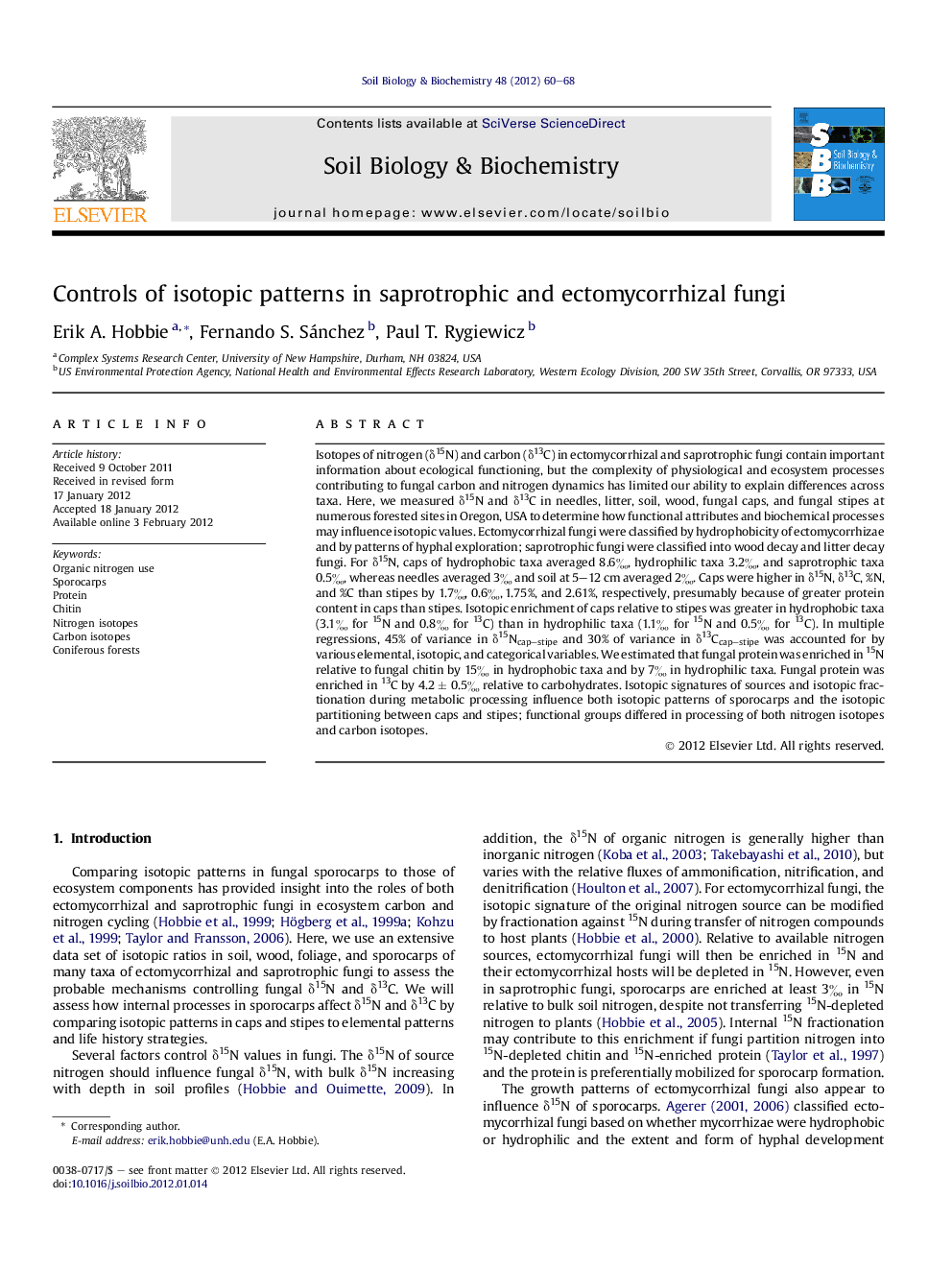| کد مقاله | کد نشریه | سال انتشار | مقاله انگلیسی | نسخه تمام متن |
|---|---|---|---|---|
| 2024934 | 1542636 | 2012 | 9 صفحه PDF | دانلود رایگان |

Isotopes of nitrogen (δ15N) and carbon (δ13C) in ectomycorrhizal and saprotrophic fungi contain important information about ecological functioning, but the complexity of physiological and ecosystem processes contributing to fungal carbon and nitrogen dynamics has limited our ability to explain differences across taxa. Here, we measured δ15N and δ13C in needles, litter, soil, wood, fungal caps, and fungal stipes at numerous forested sites in Oregon, USA to determine how functional attributes and biochemical processes may influence isotopic values. Ectomycorrhizal fungi were classified by hydrophobicity of ectomycorrhizae and by patterns of hyphal exploration; saprotrophic fungi were classified into wood decay and litter decay fungi. For δ15N, caps of hydrophobic taxa averaged 8.6‰, hydrophilic taxa 3.2‰, and saprotrophic taxa 0.5‰, whereas needles averaged 3‰ and soil at 5–12 cm averaged 2‰. Caps were higher in δ15N, δ13C, %N, and %C than stipes by 1.7‰, 0.6‰, 1.75%, and 2.61%, respectively, presumably because of greater protein content in caps than stipes. Isotopic enrichment of caps relative to stipes was greater in hydrophobic taxa (3.1‰ for 15N and 0.8‰ for 13C) than in hydrophilic taxa (1.1‰ for 15N and 0.5‰ for 13C). In multiple regressions, 45% of variance in δ15Ncap–stipe and 30% of variance in δ13Ccap–stipe was accounted for by various elemental, isotopic, and categorical variables. We estimated that fungal protein was enriched in 15N relative to fungal chitin by 15‰ in hydrophobic taxa and by 7‰ in hydrophilic taxa. Fungal protein was enriched in 13C by 4.2 ± 0.5‰ relative to carbohydrates. Isotopic signatures of sources and isotopic fractionation during metabolic processing influence both isotopic patterns of sporocarps and the isotopic partitioning between caps and stipes; functional groups differed in processing of both nitrogen isotopes and carbon isotopes.
► We explored causes of C and N isotope patterns in saprotrophic and mycorrhizal fungi.
► Different patterns of exploring the soil controlled nitrogen isotope patterns.
► Isotope enrichment of caps versus stipes corresponded to functional types.
► Shifts in relative protein content between caps and stipes also influenced isotope patterns.
► 15N and 13C enrichment of protein relative to chitin varies by functional type.
Journal: Soil Biology and Biochemistry - Volume 48, May 2012, Pages 60–68